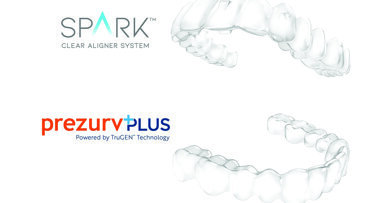Which is better: a horse or a car? While at first it seems like this is a silly question that most can easily dismiss, this question can prompt endless discussion the more you think about it.
Many more people drive cars instead of riding horses, so it might be tempting to answer with the idea that the popular choice must be the correct answer; however, we know that popularity does not necessarily equate to quality. Discussions about the cost, maintenance, reliability, availability, ease of use and realism of using a horse versus a car for transportation are likely occurring in your mind. Although both are modes of transportation, they are vastly different from one another, making such debates somewhat humorous and academic.
When it comes to orthodontics, the horse/car concept can be projected onto the questions of braces/aligners or twin/self-ligating bracket discussion. The current diversity of opinion on what makes for "good orthodontics" spans a wide chasm from 1950s zero-prescription braces-on-bands to the newest tech that is showing up today. Back in the day, one of my mentors told me he didn't care if we used "a ball of string and a tin can to straighten teeth" as long as our job was done well, and then we debated the best method.
In our office's rendition of the horse/car debate, our team greatly focuses on the patient experience. We stopped taking impressions for records in 2013 when we were able to purchase an intraoral scanner. We stopped pouring plaster models to make orthodontic retainers when we were able to implement 3-D printing to print plastic models.
We started using Ormco's™ Insignia Custom Smile Design as our standard of care in 2009 to improve the patient experience. We found that having a digital treatment plan to reverse engineer ideal bracket positioning and fabricating a system to place the braces exactly as planned could shorten treatment time by reducing adjustment appointments. Ormco’s Insignia improved the patient experience. Our anecdotal findings on efficiency while maintaining quality were confirmed by peer-reviewed research1.
Insignia was a step in the right direction for patient care, but it could have been better. In some respects, it was a car because of the automation of care it provided, but in other aspects, it was a horse in that it required additional care during the process. There was much debate over which method was better: manually placing braces on the fly in the chair or digital treatment planning ahead of time with Insignia. Regardless, we found that Insignia’s benefits far outweighed its shortcomings, and we drove Insignia for our practice’s success.
From 2009 (when our practice started using Insignia) to 2024, orthodontics has changed. There are now new "methods of transportation" for us to evaluate. Today, in our office, we use Ormco Digital Bonding (ODB) as our standard of care. ODB combines Ormco's Damon Ultima™ brackets with Ormco's Spark™ Clear Aligner software.
The components of Ormco Digital Bonding
Let's explore the components of ODB, starting with Ormco's Spark Approver software. The Spark Approver software is fast and easy, has a web-based approver for evaluation and has the tools to do the job well. In addition to the web-browser-based version, the Approver software offers a desktop program for Mac and Windows.
We use ODB's desktop version of the Spark Clear Aligner Approver software to model treatment goals for the smile and occlusion. It works the same as if we are creating a final goal for aligners; however, when planning bracket bonding for braces treatment with the Spark Approver software, the treatment projection looks like an aligner series with only two time points — the pretreatment and the final goal.
The Spark Approver software is the vision/navigation system that allows us to see what we want to do and allows us to see challenges to avoid. For decades, orthodontics has embraced the power of the computer simulation of treatment for aligners. The Spark Approver software planning technology can now be used for braces via the bracket bonding capabilities of ODB. One of the coolest aspects of using Spark for aligners and ODB is that all of our aligners AND braces submissions are held in a single platform using the same technology.
The second component of ODB is the Damon Ultima System. We've been using the Damon System since around 2006 and have witnessed numerous improvements in our treatments and those of our colleagues worldwide.
From what we've seen, extensive research and development has always been the basis of the Damon System. Damon Ultima is not just a polished version of previous Damon System brackets but a from-the-ground-up rebuild of a new bracket system, and it has overcome the limitations of previous designs.
The Damon Ultima bracket slots differ from earlier versions of the Damon System, and this difference in design is essential to the function. Rather than have a flat top and bottom to the bracket slot, the procline and retrocline Damon Ultima System bracket slots have contact where needed to engage torque-coupling. The round-sided rectangular wires fill and fully engage the front and back of the bracket slot (when the passive-self-ligation door has been closed). The contact points of the wires on the bracket slots are where they need to be without the undesired binding that occurs with other, more traditional designs.
Much education is available to learn how the Damon Ultima System functions and how to best use it effectively for patient care. It's worth investing time in the education process to learn how to drive this "vehicle" properly because it handles differently than you've previously been driving.
After the Ultima 0.014 x 0.0275 round-rectangular wire has been in the Damon Ultima System brackets for a couple of months, the rotations should be gone (assuming the brackets have been placed well). After the 0.018 x 0.0275 round-rectangular wire has been in place for a few months, torque control should have been achieved.
You'll hear from Ormco that "The Damon Ultima System is the first true full-expression orthodontic system designed for fewer wire bends throughout treatment for faster and more precise finishing2."
After learning from the design engineers, seeing cases and receiving education from our colleagues, I fully believe that statement, due to the system's unique design, rotation control, torque control and other critical aspects of care that are seen early in the process.
While we really appreciate the excellence of the Damon Ultima System, there is a big issue that we face when using the system: the brackets must be placed well. Actually, the bracket placement issue is a consistent problem across all bracket systems and is not unique to the Damon Ultima System. While we believe that, head-to-head, the Damon Ultima System is the best bracket we can use today, any bracket system can be "crashed" if placed poorly. If placed well, Ultima can provide an elegant simplicity of use, which is why we use Ormco Digital Bonding.
The jig/template systems with ODB (Fig. 6) allow us to place the braces where we planned for them to go. If a patient loses a bracket because they were suddenly attacked by a bag of sticky candy, we can replace the braces exactly back to where they were intended to go. We can have our team help us with the bonding process because, by the time of the bonding, we've already made the clinical decisions about where the braces should be placed. When placing the braces, we can focus on proper bonding technique rather than try to make 28 sequential guesses on a restless patient exhibiting super-human powers of saliva production.
The complexity of ODB's design process has delivered for us simplicity in treatment execution. Past the bonding date, we know that well-placed brackets will provide treatment with fewer bends of smaller magnitude. Some systems involve reacting by having computers bend wires to make up for planning. In contrast to bending a wire that looks like a roller-coaster, there can be elegance in simplifying a complex process by planning treatment before starting. Also, roller-coaster wires wreaked havoc on treatment mechanics.
Simply put, Ormco Digital Bonding helps us provide a better patient experience by providing a realistic means to plan treatment in advance. We have an answer regarding the orthodontic version of the horse/car debate. We prefer a vehicle that can provide us with excellent clinical outcomes, that is realistic to drive and that helps us to deliver the patient experience that we would want for ourselves if we were in treatment._
References
- Am J Orthod Dentofacial Orthop 2015;148:1067-74
- Data on file with Ormco Corporation
Editorial note:
Disclaimer: Dr. Bandeen is a paid consultant for Ormco. The opinions expressed are those of Dr. Bandeen. Ormco is a medical device manufacturer and does not dispense medical advice. Clinicians should use their own professional judgment in treating their patients. Teeth images have not been altered. Patient results may vary.
Topics:
Tags:
Ormco Corp., a global leader in orthodontic solutions, has announced the launch of its Spark On-Demand program, which enables doctors to order any number of...
For years, orthodontic practices like mine had to rely on different providers for the latest digital technology. One company provided the scanner, another ...
Brea, Calif. (Aug. 8, 2023) – Ormco Corporation announces the highly anticipated Spark Clear Aligners Release 14. Release 14 continues Spark’s ...
Live webinar
Wed. 14 January 2026
12:00 PM EST (New York)
Dr. Théo Laplane, Dr. Robert Gottlander DDS
Live webinar
Fri. 16 January 2026
12:00 PM EST (New York)
Live webinar
Mon. 19 January 2026
1:00 PM EST (New York)
Philipp Kopp, Michael Seeber
Live webinar
Thu. 22 January 2026
9:00 AM EST (New York)
Prof. Judith Jones D.D.S; M.P.H., Prof. Kakuhiro Fukai D.D.S., Ph.D, Dr. Bathsheba (Bethy) Turton
Live webinar
Thu. 22 January 2026
2:00 PM EST (New York)
Dr. Nicola M. Grande DDS, PhD
Live webinar
Wed. 28 January 2026
8:00 AM EST (New York)
Live webinar
Wed. 28 January 2026
11:00 AM EST (New York)
Prof. Dr. Jan-Frederik Güth



 Austria / Österreich
Austria / Österreich
 Bosnia and Herzegovina / Босна и Херцеговина
Bosnia and Herzegovina / Босна и Херцеговина
 Bulgaria / България
Bulgaria / България
 Croatia / Hrvatska
Croatia / Hrvatska
 Czech Republic & Slovakia / Česká republika & Slovensko
Czech Republic & Slovakia / Česká republika & Slovensko
 France / France
France / France
 Germany / Deutschland
Germany / Deutschland
 Greece / ΕΛΛΑΔΑ
Greece / ΕΛΛΑΔΑ
 Hungary / Hungary
Hungary / Hungary
 Italy / Italia
Italy / Italia
 Netherlands / Nederland
Netherlands / Nederland
 Nordic / Nordic
Nordic / Nordic
 Poland / Polska
Poland / Polska
 Portugal / Portugal
Portugal / Portugal
 Romania & Moldova / România & Moldova
Romania & Moldova / România & Moldova
 Slovenia / Slovenija
Slovenia / Slovenija
 Serbia & Montenegro / Србија и Црна Гора
Serbia & Montenegro / Србија и Црна Гора
 Spain / España
Spain / España
 Switzerland / Schweiz
Switzerland / Schweiz
 Turkey / Türkiye
Turkey / Türkiye
 UK & Ireland / UK & Ireland
UK & Ireland / UK & Ireland
 International / International
International / International
 Brazil / Brasil
Brazil / Brasil
 Canada / Canada
Canada / Canada
 Latin America / Latinoamérica
Latin America / Latinoamérica
 China / 中国
China / 中国
 India / भारत गणराज्य
India / भारत गणराज्य
 Pakistan / Pākistān
Pakistan / Pākistān
 Vietnam / Việt Nam
Vietnam / Việt Nam
 ASEAN / ASEAN
ASEAN / ASEAN
 Israel / מְדִינַת יִשְׂרָאֵל
Israel / מְדִינַת יִשְׂרָאֵל
 Algeria, Morocco & Tunisia / الجزائر والمغرب وتونس
Algeria, Morocco & Tunisia / الجزائر والمغرب وتونس
 Middle East / Middle East
Middle East / Middle East





















































To post a reply please login or register